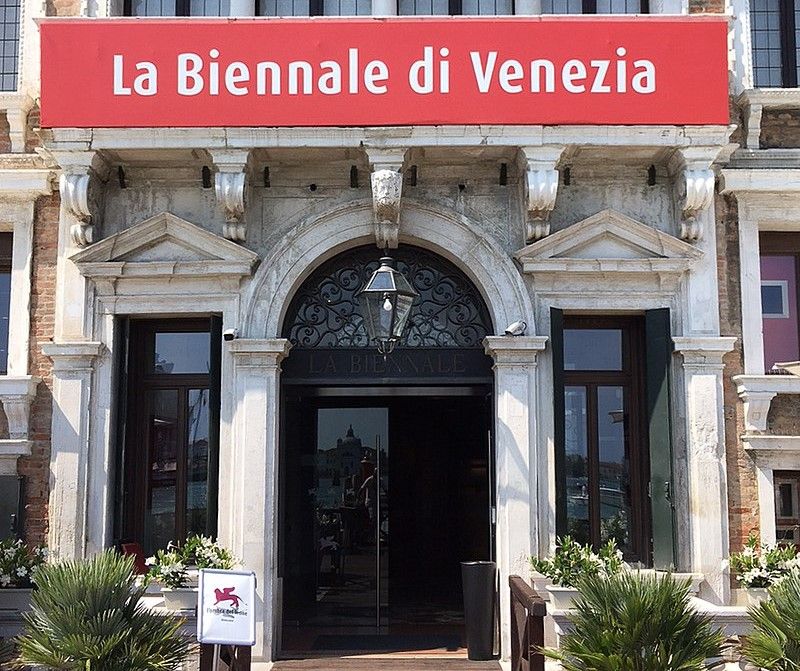The Venice Art Biennale 2024 takes us to a world where art is not just visual, but involves all our senses. From a Chinese dragon in Northern Europe to a kinetic sculpture in Japan, and perfumers at work in Korea, the geography of art has been transformed.
The central themes are colonialism and environmentalism.
Here are the details.
Biennale art 2024 Venice
Under the guidance of curator Adriano Pedrosa, the National Pavilion exhibitions explored a wide range of interpretations.
Although National Pavilions may seem antiquated in a globalized world of continuous exchange and dialogue, still they can be a starting point for critically examining their own existence.
One example is the project of Catpc, Cercle d'Art des Travailleurs de Plantation Congolaise (Art League of Congolese Plantation Workers), which has created a direct link via livestream between the Netherlands Pavilion and the White Cube in Lusanga, home of the collective.
Magic clones
Since 2014, Catpc has used proceeds from its works to purchase land from Unilever and regenerate it to support the Lusanga community.
The works on display include sculptures made from plantation clay, which are then scanned and printed in a mixture of cocoa, sugar and palm oil in Amsterdam.
These sculptures, called “magic clones,” represent symbolic characters of the present, atrocities of the past and sacred sculptures looted during the colonial era. Some of them, such as the Balot sculpture, have been returned to Congo and can be viewed via streaming with Lusanga.
Venice Art Biennale 2024: Canada Pavilion
Murano glass beads, known as conterie, have found new life in the Pavilion of Canada thanks to the artistic intervention of Kapwani Kiwanga.
These beads, once used as currency by European merchants in Africa and the Americas, represent an intricate value system that raises questions about transoceanic trade and the social dynamics associated with it.
Biennale art 2024 Venice: Egypt Pavilion
In the Egypt Pavilion, Wael Shawky presented a fascinating multimedia work titled “Drama 1882,” which chronicles the uprising against British rule through an immersive musical. The use of expressionless actors moving like puppets adds a level of depth to the narrative, leading the viewer to reflect on the cruelty of British colonialism.
Biennale art 2024 Venice: Pavilion of Switzerland
Guerreiro do Divino Amor has challenged national narratives in the Swiss Pavilion, presenting projects that ridicule identity clichés.
Through a mix of pop aesthetics and in-depth conceptual research, the Brazilian-Swiss artist invites the audience to reflect on supposed Western cultural superiority and artificial constructions of national identity.
Venice Art Biennale 2024: Pavilion of the Nordic Countries
The Nordic Countries Pavilion offers an extraordinary spectacle with “The Altersea Opera,” a three-act opera that blends folklore, tradition and modernity.
Inspired by a surreal story, Lap-See Lam's creation tells of a restaurant boat built by a Swedish-Chinese entrepreneur, which goes bankrupt and becomes a ghost house in Stockholm.
This narrative is intertwined with the story of Lo Ting, a half-human, half-fish character, on a journey to Hong Kong.
Venice Art Biennale 2024: Pavilion of the Czech Republic
Collaboration is at the heart of the Pavilions of the Czech Republic and the Slovak Republic, which have decided to exhibit together this year. Eva Kotátková presents an installation in the Czech Pavilion that reflects on the fate of the giraffe Lenka, while Oto Hudec presents a project on the exterior walls.
The Korea Pavilion, meanwhile, offers a choral olfactory experience, with more than 600 fragrances evoking memories of the Korean peninsula.
Biennale art 2024 Venice: Japan Pavilion
The Japan Pavilion presents a project by Yuko Mohri that explores dematerialization through fountains that emit sound and light in response to the flow of water and electrode-connected fruit that transforms decay into a multisensory experience.

